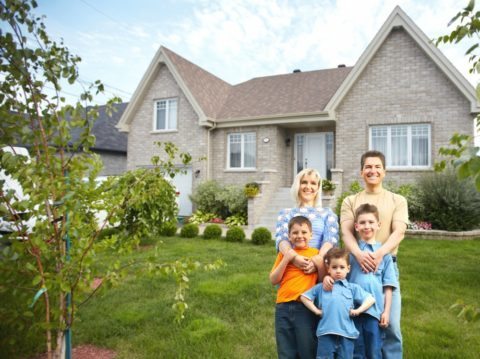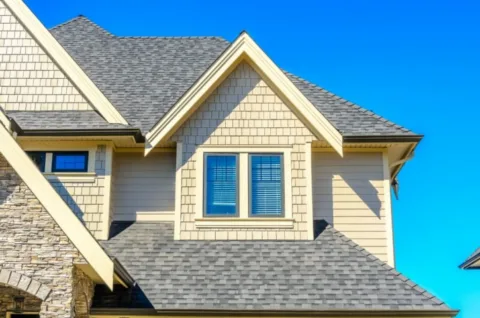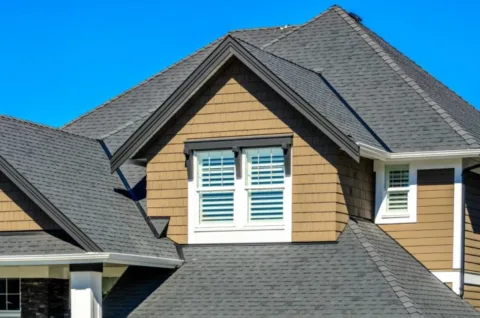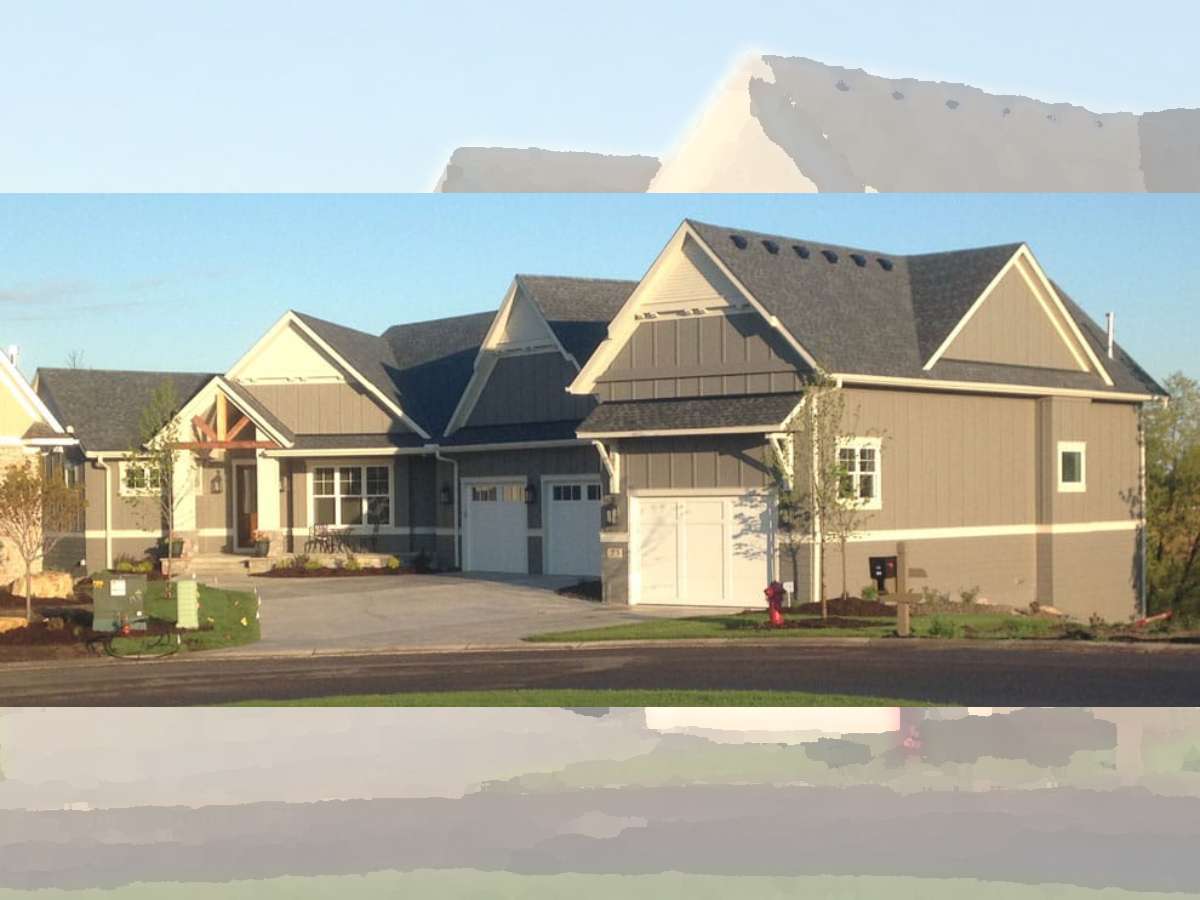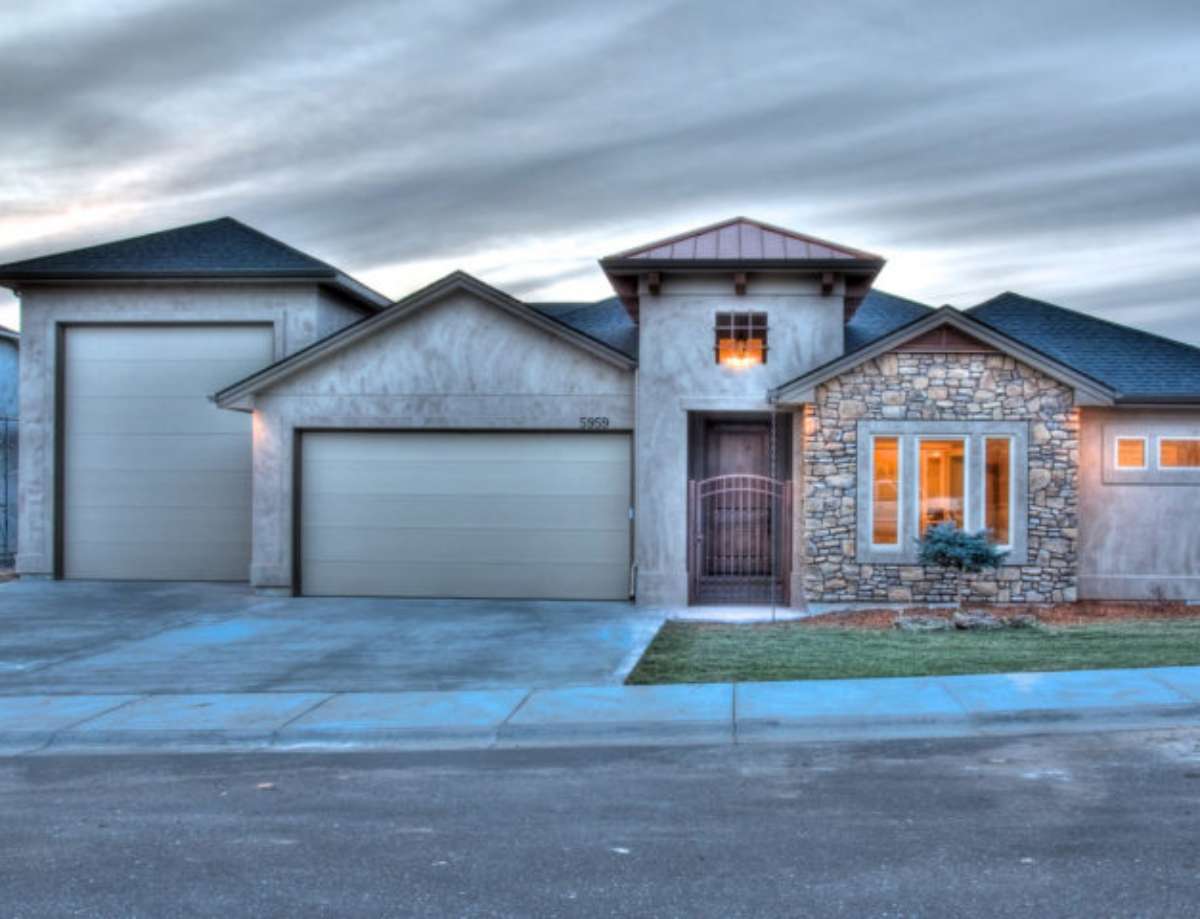We tend to pay much attention to aesthetics and curb appeal when it comes to our exterior home designs. But did you know that your choice of roof shingle colors can have a significant impact on your utilities and energy costs?
The roof covers a huge portion of the exterior of your house and receives most of the direct sun rays. As such, your roof plays the biggest role in determining how much of the sun’s heating gets into your home.
You probably know from elementary science that different colors respond differently to light and heat energy:
- Brighter or lighter colors tend to reflect away not just light rays, but heat as well.
- Darker colors such as black have a reputation of absorbing much of the heat energy that hits them.
This explains why people gravitate towards white and reflective colored clothes in summer.
When it comes to roof shingles for your home, this property of colors becomes much more important –because roof color can significantly affect your overhead costs.
Light vs. Dark Roof Colors
The choice of your home’s roof color admittedly impacts your house’s exterior design.
We all want something that will complement the rest of the building’s exterior. Nonetheless, cost considerations should always prevail over aesthetics in this particular area.
It’s clear that your roof color affects the temperature of your home. And like many people, you might be divided between the two options — whether dark roof shingles or reflective roof shingles are the best for your roofing needs.
So let’s take each in turn and weigh the tradeoffs.
Reflective Roof Shingles
Reflective architectural shingles absorb less heat while making most of it bounce back into the atmosphere. During summertime, this can be a lifesaver.
I find that solar reflective roofing shingles create ample cooling effect for the home — eventually helping me to promote energy savings and be able to comply with greenhouse programs.
Normally, roof shingles such as LEED, Energy Star, and CRRC that are energy compliant will significantly cut your air conditioning needs. Those roofing options help your air conditioner operate more efficiently — consuming less energy and subsequently lowering your utility bills during the summer. Therefore, you will save on the cost of cooling your home.
Solar heat also ages traditional asphalt shingles and negatively impacts your roof. When your roof absorbs a lot of heat from the sun, the asphalt becomes stiff and starts losing granules. This leads to quicker aging of your house.
The reflective granules from the bright roofing shingles remain significantly cooler than standard granules — thereby increasing the lifespan of your home’s roof. Needless to say, a longer lifespan means significant savings in the long run.
For those who are environmentally conscious, reflective roof shingles also help you reduce your environmental impact — due to reduced material waste going into the environment.
Dark Colored Roof Shingles
Dark roof shingles actually raise the temperature inside your home.
In the summer, this may directly translate to increased air conditioning needs — because your cooling system has to work more to even out the extra heat. As a result, your energy bills will gradually escalate.
During winter, your home needs heating. A dark roof color can tap heat from the sun and transmit it into your home — making it warmer. Therefore, dark roof shingles are beneficial in colder climates where winters are particularly long and summers are brief.
What’s the impact on your pocket? Since there is less of a need for heating in your rooms — because the temperatures inside your home remain warmer — you will save on the cost of heating your home.
The Most Cost-Effective Roofing Option
Clearly, you cannot have both types of roofing (reflective roof shingles and dark colored roof shingles) at the same time in the same house. You must choose one of them.
But which color option will provide the most cost-efficient results?
In places that experience longer periods of summertime, the answer is nearly automatic: reflective roof colors.
However, when it comes to the roof shingle colors in places that experience longer winters, the choice isn’t as spontaneous. This is especially true in places where winters come with a lot of snow. Here’s why…
In practice, dark roof colors may not often appear dark in the depth of winter — because they are often covered in snow and become all white. Their heat absorption quality becomes useless in such conditions. The white snow essentially reflects away much of the sun’s rays, rendering the dark roof underneath unable to absorb and transmit the heat where it’s needed. This means the dark roof color does not help you cut costs at the time.
The bottom line:
- Dark roof shingles help warm your home during cold weather — but they become ineffective deep in winter when they are covered in snow and stop helping you save money.
- Reflective roof shingles are always reflecting rays from the sun — meaning they guarantee continuous support for reduced utility costs and energy costs.
So which of the two would you rather pick? You have the facts… I’ll let you decide.
Matt Lee works for Malarkey Roofing, a leading manufacturer of roofing products based in Portland, Oregon.
My husband and I have been through the home building process… from scratch… more than once! (And we still have a few pieces of property that we might build on in the future.) So we definitely have some helpful tips to share when it comes to designing your dream home and building a house from the ground up. We've also learned that the 'fun' doesn't end once the house is built. Our clever home maintenance hacks will save you time and money each year that you live in the home. And… since everyone's house eventually needs a little remodeling (as has ours), we've got some ridiculously helpful home renovation tips as well! Whenever I’m not DIYing something around the house or adding to my Dream Home Wish List, you can find me at the corner of Good News & Fun Times as publisher of The Fun Times Guide (32 fun & helpful websites).

